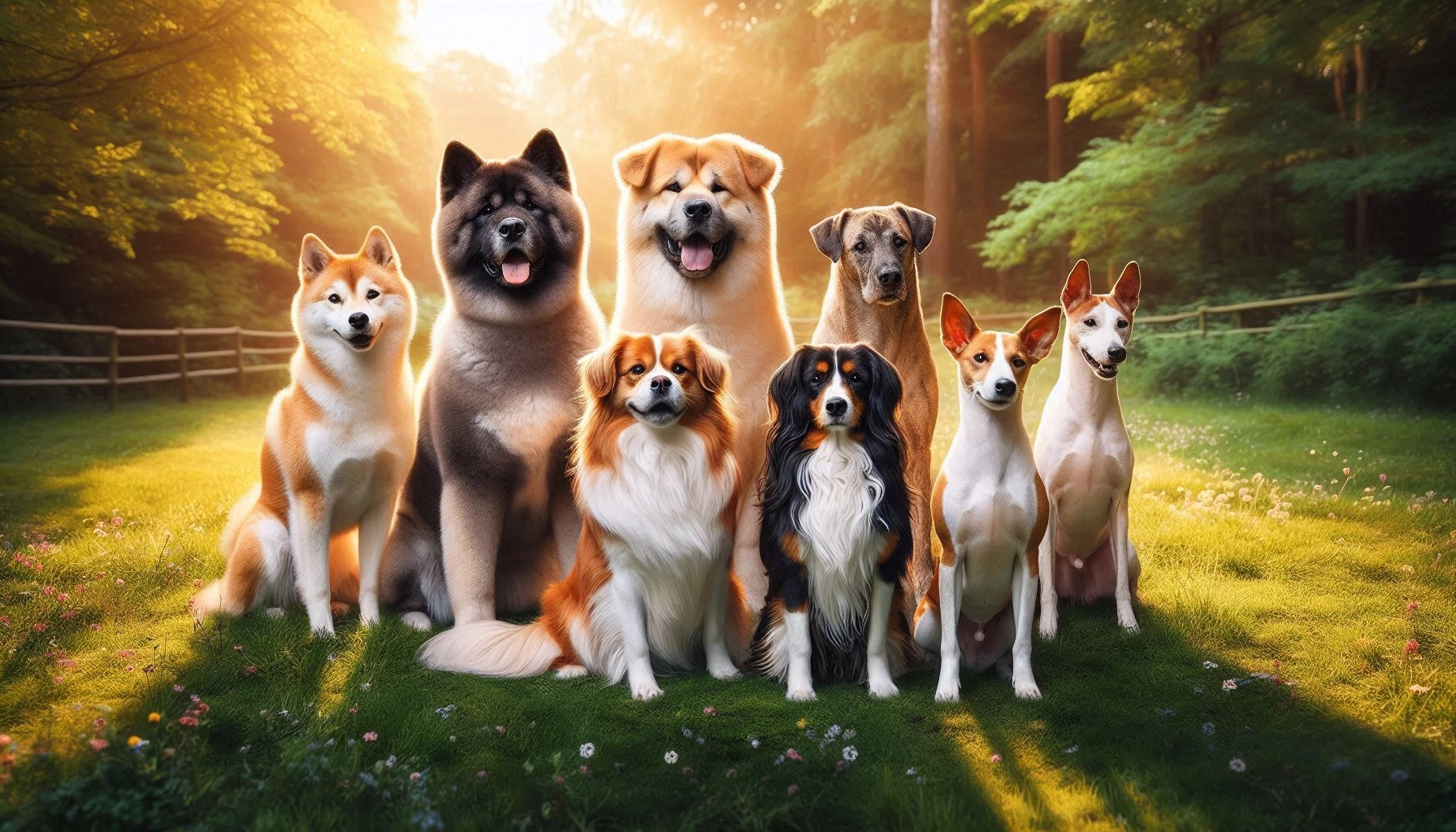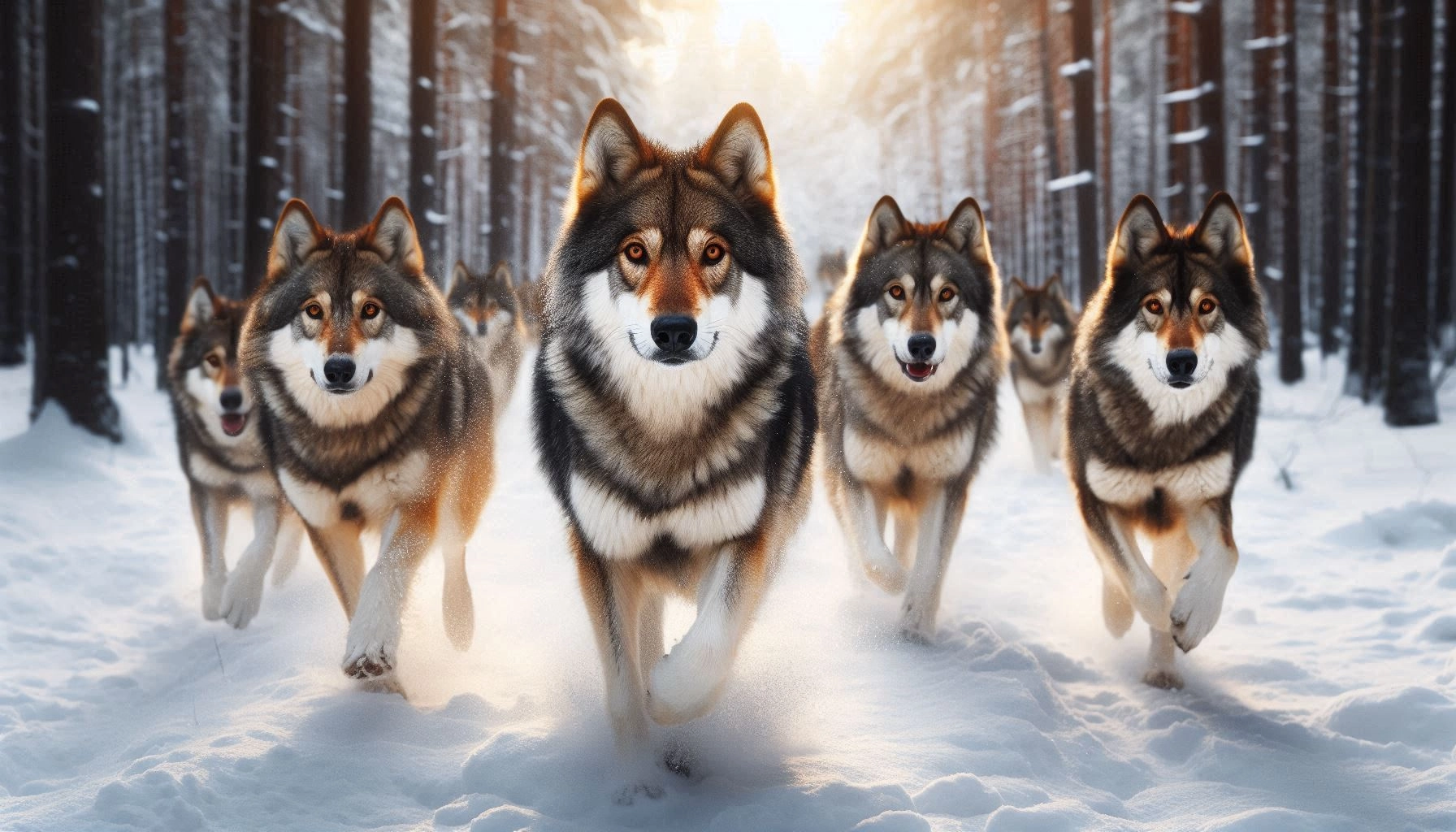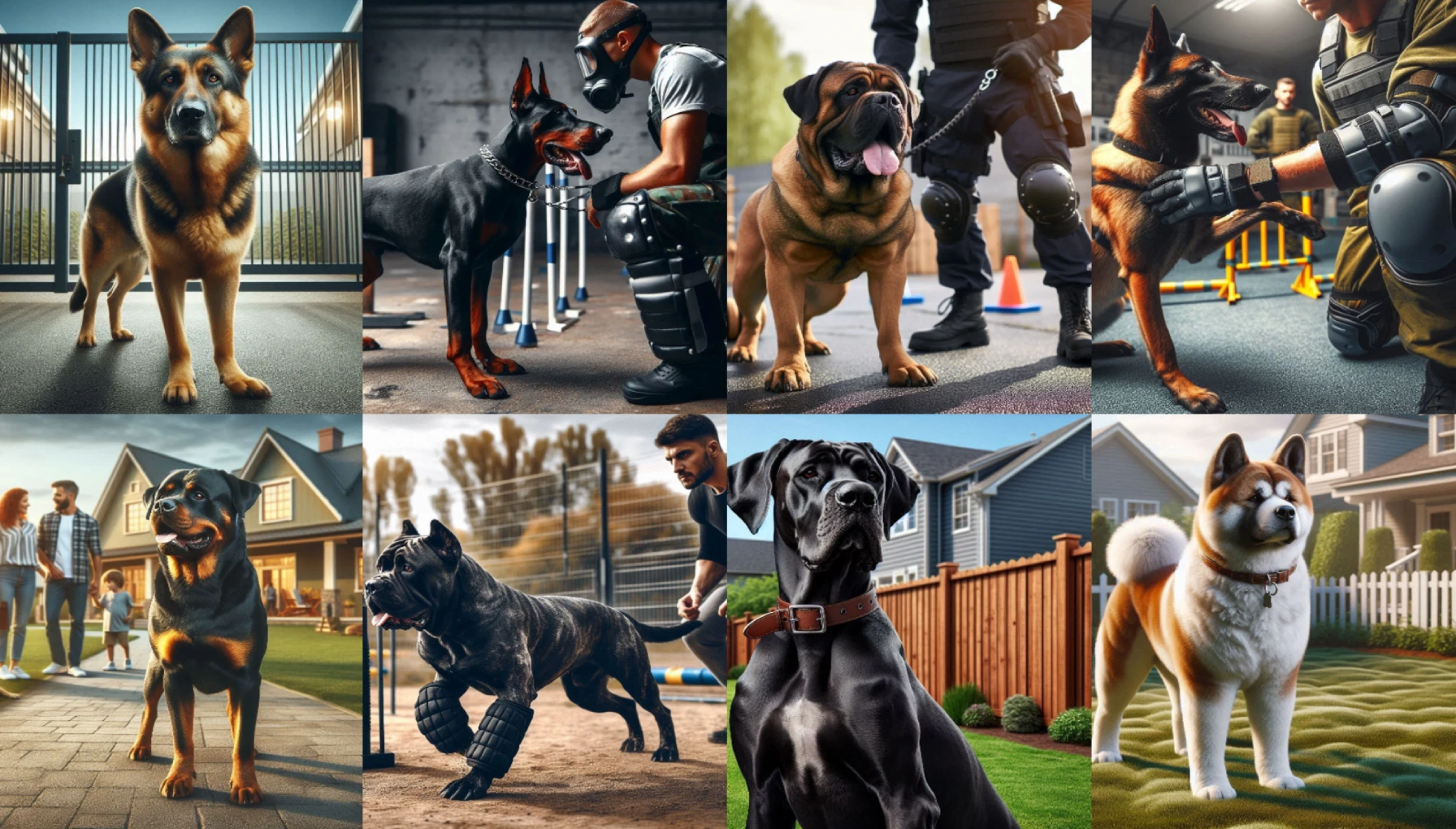Table of Contents
UK dog breeds: The Most Recognized Dog Breeds Worldwide
A Look at Global Canine Diversity
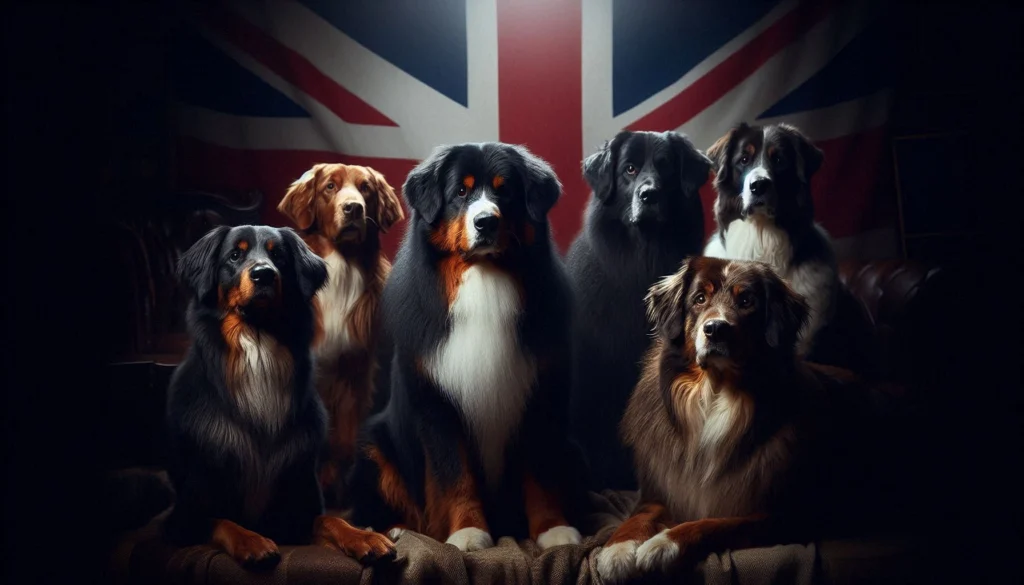
Dogs have been humans faithful companions for thousands of years, beloved for their loyalty, intelligence, and versatility. From fluffy lap dogs to hardworking herders, the diversity of dog breeds is a reflection of the unique environments and cultures in which they evolved. But when it comes to the sheer number of distinct dog breeds, one country stands out above the rest. So, which country has the most dog breeds in the world?
This article will explore the nations that have shaped the world of dog breeding, with a special focus on the United Kingdom the country that boasts the highest number of recognized dog breeds globally. We’ll also delve into how other countries, like Germany, have contributed to global canine diversity, and how historical, cultural, and environmental factors shaped these incredible animals we now call “man’ best friend.”
A Global Look at Dog Breeds
Dogs have been bred for thousands of years for specific purposes whether for hunting, herding, guarding, or simply companionship. Each breed carries the imprint of its origin, whether shaped by climate, geography, or human necessity. The world currently recognizes over 340 dog breeds, categorized by organizations like the American Kennel Club (AKC) and Fédération Cynologique Internationale (FCI). But which country stands out in contributing the most breeds to this extensive list?
The Top Dog: Which Country Has the Most Dog Breeds?
When it comes to the number of dog breeds, the United Kingdom takes the crown. The UK is home to the highest number of recognized dog breeds, and its influence on global canine diversity is unparalleled. Historically, the UK has played a major role in the breeding and development of various types of dogs, from working breeds to companions, which has allowed it to lead the pack in terms of breed variety.
The United Kingdom rich and complex relationship with dogs is deeply rooted in its diverse landscapes, where specific dog breeds were developed to meet the needs of farmers, hunters, and aristocrats alike. Each region within the UK England, Scotland, Wales, and Ireland has contributed to the creation of distinct breeds, often tailored for specific roles, such as herding, hunting, and companionship.
Notable British Dog Breeds
Here are just a few breeds that originated in the UK, showcasing the country diverse contributions:
- Bulldog: Perhaps one of the most iconic British breeds, the Bulldog, known for its muscular build and distinctive wrinkled face, has become a symbol of strength and resilience.
- Border Collie: This intelligent and energetic breed hails from the border regions of England and Scotland, known for its herding skills and remarkable trainability.
- Cavalier King Charles Spaniel: This breed, known for its affectionate nature and royal connections, was named after King Charles II and has been a favorite among the aristocracy.
- Jack Russell Terrier: Bred for hunting small game like foxes, this lively and fearless terrier originated in England and has become a popular household pet worldwide.
- Scottish Terrier: This breed, often affectionately known as the “Scottie,” is a compact and confident dog, originally bred in Scotland for hunting purposes.
The UK long-standing love affair with dogs also gave birth to some of the earliest kennel clubs. The Kennel Club in the UK, founded in 1873, is one of the oldest and most prestigious canine organizations in the world. It was instrumental in standardizing breeds and formalizing the recognition of dog breeds, solidifying the UK’s dominance in the global dog breeding landscape.
Why Does the UK Have the Most Dog Breeds?

There are several reasons why the United Kingdom has more dog breeds than any other country. Key factors include geography, historical events, and cultural trends that have all contributed to the UK rich diversity of dog breeds.
Historical Significance of Dog Breeding
Throughout history, dogs have been bred in the UK for both practical and aesthetic purposes. During the Victorian era, in particular, the breeding of dogs became a fashionable pursuit among the aristocracy. The British elite took great interest in refining dog breeds to serve specific purposes, whether it was for hunting, herding, or simply as companions.
For instance, Foxhounds were developed to assist in traditional fox hunts, while the Whippet was bred as a racing dog for working-class communities. This era saw a surge in the formalization of dog breeds, with breeding programs aimed at creating dogs that fit certain standards in terms of both appearance and function.
Diverse Landscapes and Their Impact
The United Kingdom geographical diversity has also played a pivotal role in shaping its dog breeds. From the rugged Highlands of Scotland to the vast farmlands of England, different terrains required dogs that could perform specific tasks.
- Herding dogs, like the Border Collie, were necessary in agricultural regions, where sheep farming was prevalent.
- Terriers, such as the Jack Russell Terrier, were bred to hunt and control vermin, a crucial task in rural and urban areas alike.
- In the wetter, swampier areas, breeds like the Otterhound were developed for hunting otters and other water-based game.
Cultural Passion for Breeding and Dogs
The UK passion for breeding also extends to the general public. Dog shows, such as Crufts, one of the largest dog shows in the world, are held annually, attracting participants and enthusiasts from around the globe. These events celebrate the country’s deep commitment to maintaining and improving breed standards, further enhancing the UK’s reputation as the global leader in dog breeding.
Second Place: The Country That Comes Close
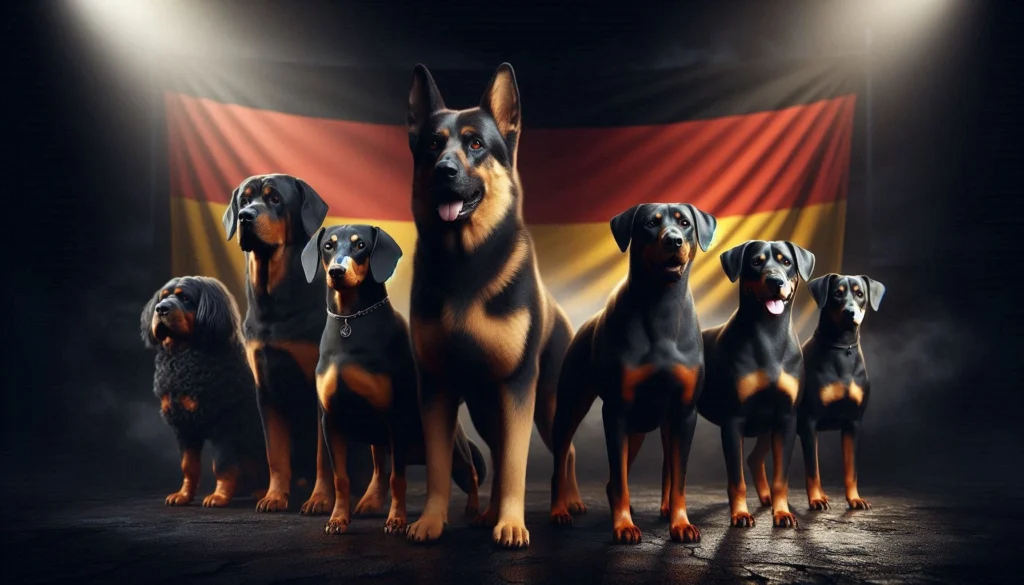
While the UK may be the top contender, Germany is not far behind when it comes to the number of recognized dog breeds. Germany has a long history of developing some of the world’s most beloved and iconic dog breeds, many of which were originally bred for working purposes.
Among the most famous German breeds are:
- German Shepherd: Known for their intelligence and versatility, German Shepherds have long been used in military, police, and search-and-rescue roles.
- Rottweiler: Originally bred to herd livestock and pull carts, Rottweilers are known for their strength and guarding instincts.
- Doberman Pinscher: A sleek and powerful breed, Dobermans were initially bred for personal protection.
- Dachshund: With their long bodies and short legs, Dachshunds were bred for hunting badgers and small animals.
- Great Dane: Often referred to as the “gentle giant,” Great Danes were originally used for hunting large game.
Germany’s strong culture of working dogs has contributed to its high number of dog breeds, many of which were developed to perform specific tasks. The establishment of strict breed standards and breeding clubs, such as the Verein für Deutsche Schäferhunde (Society for German Shepherds), has played a vital role in Germany’s success in producing and maintaining its unique breeds.
How Other Countries Contribute to Canine Diversity
Beyond the UK and Germany, other countries have also played a crucial role in the development of dog breeds. Some nations may not boast as many recognized breeds, but their contributions to canine diversity are still significant.
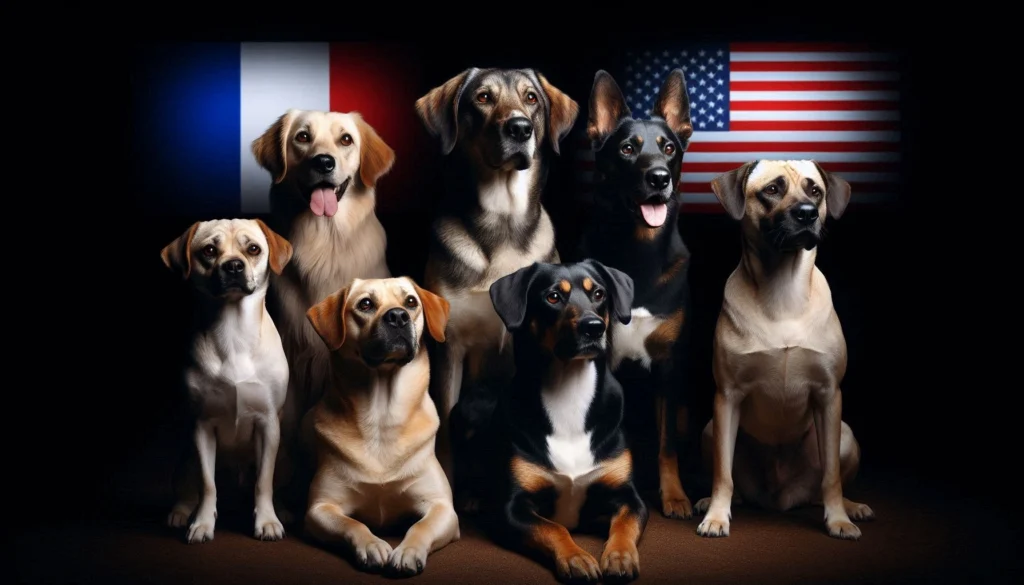
Other Countries with Notable Dog Breeds
2. France
France is home to a number of elegant and hardworking dog breeds, particularly in the hunting category. Some notable breeds include:
- Poodle: Despite its often glamorous appearance, the Poodle was originally bred as a water retriever.
- French Bulldog: A popular small companion dog, the French Bulldog is known for its bat-like ears and affectionate personality.
- Basset Hound: A scent hound bred for tracking, the Basset Hound’s droopy ears and long body make it a unique and recognizable breed.
2. United States
Although relatively new to the world of dog breeding compared to European countries, the United States has also developed its fair share of popular breeds:
- American Pit Bull Terrier: Known for its strength and loyalty, this breed has garnered both admiration and controversy.
- Alaskan Malamute: Bred for its strength and endurance, the Alaskan Malamute is one of the oldest Arctic sled dogs.
- American Cocker Spaniel: A friendly and playful breed, the American Cocker Spaniel is often recognized by its beautiful, flowing coat.
Each country’s unique landscape, culture, and needs have shaped the breeds they developed, contributing to the rich tapestry of global dog breeds.
The Influence of Globalization on Dog Breeds
In today’s interconnected world, globalization has significantly impacted the development and spread of dog breeds. Once confined to specific regions, dog breeds are now shared across borders, allowing people worldwide to enjoy and breed them.
Modern breeding practices, often involving crossbreeding, have also led to the creation of new “designer” breeds, such as the Labradoodle (a cross between a Labrador Retriever and a Poodle). While crossbreeding has raised concerns about maintaining breed purity, it has also provided a wider variety of dogs that can fit different lifestyles and preferences.
Furthermore, international dog shows and competitions have fostered a global community of dog enthusiasts, making it easier to breed, showcase, and appreciate dog breeds from all corners of the globe.
Fun Facts About the World Dog Breeds
Dog lovers are sure to enjoy some fascinating tidbits about breeds around the world:
- Smallest Breed: The Chihuahua, hailing from Mexico, holds the title of the world’s smallest breed.
- Tallest Breed: The Irish Wolfhound, from Ireland, can stand up to 34 inches tall at the shoulder, making it the tallest of all dog breeds.
- Barkless Dog: The Basenji, from Africa, is unique in that it doesn’t bark. Instead, it makes a sound resembling a yodel.
Certain breeds also hold special cultural significance. In Japan, the Akita is a symbol of loyalty and protection, while in Russia, the Borzoi was historically favored by the aristocracy for hunting.
Factors Contributing to a Country Dog Breeds
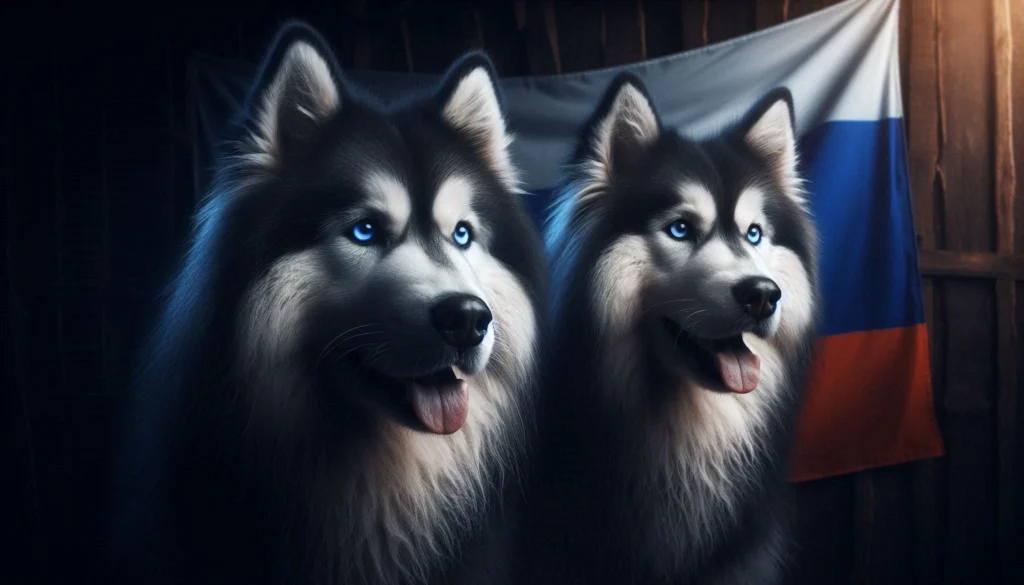
A few key factors have historically contributed to a country ability to develop multiple dog breeds:
1. Geography and Climate
A country geography plays a significant role in shaping the physical characteristics of its dogs. For example, breeds in colder climates, like the Siberian Husky from Russia, often develop thicker coats to withstand harsh weather, while those in warmer climates may have thinner coats and smaller builds.
2. Cultural Practices and Traditions
Different countries have unique needs and practices that influence the types of dogs they breed. For instance, herding dogs are common in countries with large pastoral landscapes like Scotland and Australia, while hunting dogs flourish in regions where hunting was historically essential for survival, such as England and Germany.
3. Historical and Economic Influence
Nobility and aristocracy have historically influenced dog breeding, particularly in countries like the UK and France. Many breeds were developed as status symbols or for specific tasks such as hunting or guarding estates.
Conclusion
The United Kingdom’s top position as the country with the most dog breeds is a testament to its long-standing relationship with dogs and its influential role in the world of dog breeding. However, it’s clear that other nations, like Germany, France, and the United States, have also made valuable contributions to global canine diversity.
Each dog breed reflects the unique environment and culture from which it originated, making the diversity of dog breeds a fascinating aspect of human history and our bond with animals. Whether you’re drawn to the energetic Border Collie or the majestic Great Dane, the world’s dog breeds offer a wide array of companions for every lifestyle.
FAQs
What makes the UK the country with the most dog breeds?
The UK long history of breeding dogs for work, hunting, and companionship has led to the development of many diverse breeds. The country’s unique combination of rural and aristocratic traditions, along with a passion for canine companionship, has contributed to the creation of numerous well-known breeds.
Are there new dog breeds being developed today?
Yes, new dog breeds are still being developed, although the process is highly regulated by kennel clubs. Some recent additions are the result of crossbreeding existing breeds for new characteristics, while others emerge from specific needs, such as hypoallergenic or low-shedding dogs.
